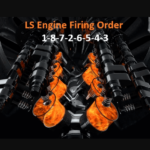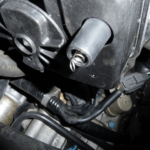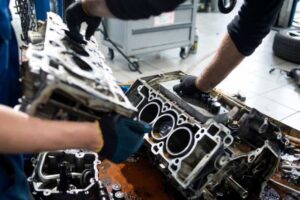The ignition cycle is a crucial aspect of the functioning of internal combustion engines. It refers to the process by which the fuel-air mixture is ignited in the engine’s cylinders, leading to the release of energy that powers the vehicle.
The ignition cycle is initiated by the ignition system, which creates a spark to ignite the fuel-air mixture just before each combustion stroke.
There are different types of ignition cycles, including the Otto cycle, which is the most commonly found in automobile engines. This idealized thermodynamic cycle describes the functioning of a typical spark ignition piston engine.
The ignition cycle is also a key factor in determining a vehicle’s emissions output, as it affects the efficiency of fuel combustion and the amount of pollutants released into the atmosphere.
Overall, understanding the ignition cycle is essential for anyone looking to gain a deeper understanding of how internal combustion engines work.
It is a complex process that involves multiple components working together to produce the energy needed to power a vehicle. In the following sections, we will explore the different aspects of the ignition cycle in more detail, including its components, types, and impact on emissions.
Ignition Cycle Basics

The ignition cycle is a fundamental process in the operation of internal combustion engines (ICEs). ICEs are commonly used in automobiles, motorcycles, and other power equipment.
The ignition cycle is the process by which the fuel-air mixture is ignited in the combustion chamber to produce the energy required to power the engine.
There are two types of ignition cycles: spark ignition and compression ignition. Spark ignition is used in gasoline engines, while compression ignition is used in diesel engines. The process of the ignition cycle is similar in both types of engines, but the timing and method of ignition differ.
In a four-stroke engine, the ignition cycle is part of the four-stroke cycle, which includes the intake, compression, power, and exhaust strokes.
During the intake stroke, the fuel-air mixture is drawn into the combustion chamber. During the compression stroke, the mixture is compressed to a high pressure and temperature.
During the power stroke, the mixture is ignited, and the resulting explosion drives the piston downward, producing power. Finally, during the exhaust stroke, the burned gases are expelled from the combustion chamber.
The ignition cycle in a spark ignition engine is initiated by an electrical spark, which ignites the fuel-air mixture. The spark is generated by the ignition system, which includes the battery, ignition coil, distributor, and spark plugs.
The timing of the spark is controlled by the engine’s electronic control module (ECM), which uses input from sensors to determine the optimal timing for ignition.
In a compression ignition engine, the fuel-air mixture is compressed to a high pressure and temperature, causing it to ignite spontaneously. The timing of ignition is controlled by the engine’s ECM, which uses input from sensors to determine the optimal timing for ignition.
Overall, the ignition cycle is a critical process in the operation of internal combustion engines. By understanding the basics of the ignition cycle, one can better appreciate the complexity and importance of internal combustion engines in modern society.
Components of Ignition Cycle

The ignition cycle is a crucial process in the internal combustion engine that powers most vehicles. It involves a series of interconnected components that work together to generate the spark that ignites the fuel-air mixture in the engine’s cylinders.
Here are some of the key components involved in the ignition cycle:
Battery
The battery is the primary source of electrical power in the ignition system. It stores electrical energy that is used to power the spark plugs and other components. The battery is typically located in the engine compartment or trunk of the vehicle.
Ignition System
The ignition system is responsible for generating the electrical spark that ignites the fuel-air mixture in the engine’s cylinders.
It includes a number of components, such as the battery, coil, distributor, rotor, and spark plugs. The ignition system can be either mechanical or electronic, depending on the design of the engine.
Spark Plugs
Spark plugs are small devices that are threaded into the engine’s cylinders. They are responsible for generating the electrical spark that ignites the fuel-air mixture. Spark plugs are typically made of ceramic and metal and can wear out over time.
Distributor
The distributor is a component of the ignition system that distributes electrical power to the spark plugs. It is typically located on the engine block and consists of a rotor and a set of contacts. The distributor can be either mechanical or electronic, depending on the design of the engine.
Coil
The ignition coil is responsible for converting the low-voltage electrical power from the battery into the high-voltage power needed to generate the spark that ignites the fuel-air mixture. The coil is typically located on or near the engine block.
Camshaft
The camshaft is a rotating shaft that controls the opening and closing of the engine’s valves. It is typically driven by a belt or chain connected to the crankshaft. The camshaft plays a critical role in the engine’s ignition cycle by controlling the timing of the spark.
Crankshaft
The crankshaft is a rotating shaft that converts the linear motion of the pistons into rotational motion. It is typically connected to the camshaft by a belt or chain. The crankshaft plays a critical role in the engine’s ignition cycle by controlling the timing of the spark.
Breaker Points
Breaker points are small metal contacts that are used in mechanical ignition systems to control the flow of electrical power to the spark plugs. They are typically located in the distributor and can wear out over time.
Transistor
Transistors are electronic components that are used in electronic ignition systems to control the flow of electrical power to the spark plugs. They are more reliable than mechanical breaker points and can provide more precise control over the ignition timing.
Engine Control Unit
The engine control unit (ECU) is a computer that controls many of the engine’s functions, including the ignition timing.
It uses input from various sensors, such as the camshaft position sensor and the crankshaft position sensor, to determine the optimal timing for the spark. The ECU can adjust the ignition timing in real-time to optimize engine performance and reduce emissions.
Stages of Ignition Cycle

The ignition cycle is a process that takes place inside the engine of a vehicle. It involves a series of stages that work together to produce the energy needed to power the vehicle. The following are the stages of the ignition cycle:
Intake Stroke
During the intake stroke, the piston moves from top dead center (TDC) to bottom dead center (BDC) while the intake valve opens. This allows the fuel and air mixture to enter the cylinder.
Compression Stroke
During the compression stroke, the piston moves from BDC to TDC while the intake and exhaust valves are closed. This compresses the fuel and air mixture, making it more volatile.
Power Stroke
During the power stroke, the spark plug ignites the fuel and air mixture, causing it to burn. This creates a rapid expansion of gases that push the piston down, generating power.
Exhaust Stroke
During the exhaust stroke, the piston moves from TDC to BDC while the exhaust valve opens. This allows the spent gases to exit the cylinder.
The ignition cycle consists of four strokes, which are the intake stroke, compression stroke, power stroke, and exhaust stroke. These strokes are all part of the piston strokes that occur during one complete revolution of the crankshaft.
The ignition timing and engine timing are critical components of the ignition cycle, as they determine when the spark plug will fire and when the fuel and air mixture will ignite.
The air mixture is drawn into the cylinder during the intake stroke, and then compressed during the compression stroke.
The burning of the fuel and air mixture occurs during the power stroke, generating the energy needed to power the vehicle. Heat rejection occurs during the exhaust stroke, as the spent gases are expelled from the cylinder.
The RPM (revolutions per minute) of the engine is determined by the speed at which the crankshaft rotates.
The faster the crankshaft rotates, the higher the RPM of the engine. The ignition cycle is a complex process that requires precise timing and coordination of various components to produce the energy needed to power a vehicle.
Fuel Types and Efficiency
The type of fuel used in an internal combustion engine has a significant impact on its efficiency and performance.
Fuel economy is the measure of how much fuel is required to power a vehicle or machine. This is an important consideration for many reasons, including cost, energy consumption, and environmental impact.
Gasoline is the most commonly used fuel in petrol engines. Gasoline engines convert the chemical energy in gasoline into mechanical energy through a four-stroke cycle.
The fuel is mixed with air and ignited by a spark plug, which creates a controlled explosion that powers the engine. Gasoline engines typically have high horsepower and are relatively efficient.
Diesel engines, on the other hand, use diesel fuel, which is more energy-dense than gasoline. Diesel engines compress the fuel and air mixture until it ignites, which creates a more efficient combustion process.
Diesel engines typically have lower horsepower but are more fuel-efficient than gasoline engines.
Alternative fuels, such as ethanol, methanol, propane, and biodiesel, are becoming more popular as people look for ways to reduce their reliance on fossil fuels. These fuels are often made from renewable sources and produce fewer emissions than traditional fuels.
However, they may not be as widely available as gasoline and diesel, and their energy density may be lower, which can impact their efficiency.
Gas turbines are another type of internal combustion engine that uses a working fluid (usually air) to generate power.
Gas turbines are often used in power generation and aircraft propulsion because they are highly efficient and have a high power-to-weight ratio. Natural gas is a common fuel for gas turbines because it is clean-burning and widely available.
Fuel injection is a technology used in internal combustion engines that improves fuel efficiency and reduces emissions.
Fuel injection systems deliver fuel directly to the engine cylinders, which allows for more precise control over the fuel-air mixture. This can lead to more efficient combustion and better performance.
In summary, the type of fuel used in an internal combustion engine has a significant impact on its efficiency and performance. Gasoline and diesel are the most commonly used fuels, but alternative fuels are becoming more popular.
Gas turbines are highly efficient and often use natural gas as a fuel. Fuel injection technology can improve efficiency and reduce emissions.
Advanced Ignition Systems
Advanced ignition systems have been developed to improve the performance and efficiency of spark-ignition engines, particularly petrol engines.
These systems help to ensure that the air-fuel mixture is ignited at the right time and in the right way, which can prevent knocking and improve the overall thermal efficiency of the engine.
One type of advanced ignition system is the electronic ignition system, which uses a high voltage transformer to generate the spark that ignites the air-fuel mixture.
These systems can be more reliable and efficient than traditional mechanical systems, as they can adjust the spark timing and intensity to suit the engine’s needs.
Another advanced ignition system is the vacuum advance system, which adjusts the spark timing based on the engine’s load and speed. This can help to ensure that the air-fuel mixture is ignited at the optimal time, which can improve the engine’s overall performance and efficiency.
Advanced ignition systems can also be used in conjunction with other technologies, such as turbochargers, to further improve the engine’s power and efficiency.
By ensuring that the air-fuel mixture is ignited at the right time and in the right way, these systems can help to maximize the engine’s compression ratio and thermal efficiency.
Here’s the deal, and I’ll break it down for you – I’m a mechanic: those fancy-pants ignition systems are a big deal in today’s engines.
They jazz up the ignition game, making engines run smoother, sip fuel like a champ, and kick out fewer nasty emissions. So, bottom line, they’re a key player in modern engine tech.
In Summary
The ignition cycle is a crucial process for internal combustion engines that allows them to produce power. The cycle includes four distinct processes: intake, compression, combustion and power stroke, and exhaust.
During the intake process, fuel and air are mixed and then inducted into the cylinder. The mixture is then compressed during the compression process, which increases its temperature and pressure.
The ignition process is initiated during the compression process when a spark ignites the fuel and air mixture. This ignition causes a rapid combustion process that produces a large amount of energy in the form of heat and pressure.
The power stroke process occurs when this energy is used to push the piston down, which in turn rotates the crankshaft and produces power. Finally, during the exhaust process, the exhaust gases are expelled from the cylinder and the cycle starts again.
The ignition cycle is crucial for the proper functioning of internal combustion engines. The cycle must occur in a specific order and timing for the engine to work efficiently. Different types of engines use different ignition cycles, such as spark ignition gasoline and compression ignition diesel engines.
Overall, understanding the ignition cycle is essential for anyone working with internal combustion engines, from mechanics to engineers.



![How to Start a Car Without a Key [Turn Ignition Without Key] how to start a car without a key](https://roadsumo.com/wp-content/uploads/2021/06/how-to-start-a-car-without-a-key-150x150.jpg)





